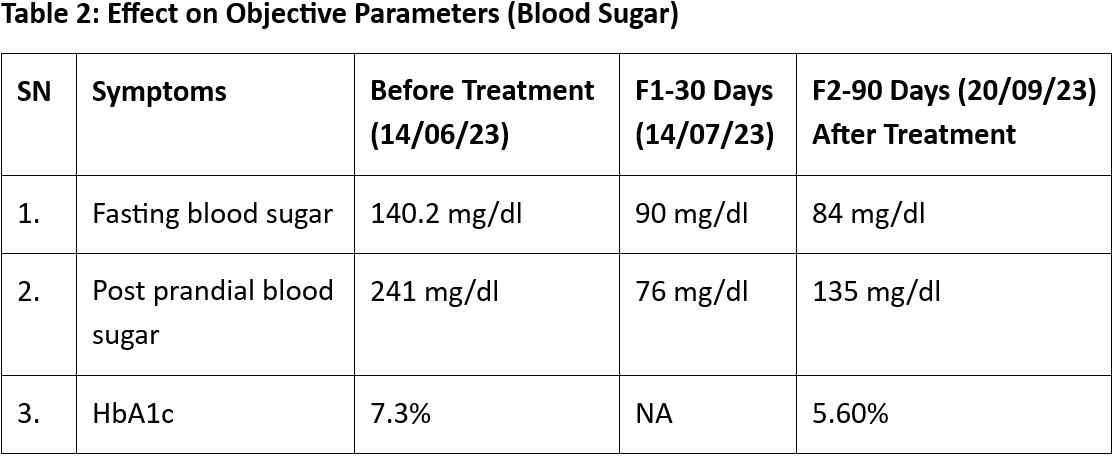Exploring the Ayurvedic perspective and treatment protocols for Prameha (Type II Diabetes Mellitus) - A Case Study
DOI:
https://doi.org/10.21760/jaims.10.5.58Keywords:
Prameha, Diabetes Mellitus, Type II DM, Madhumeha, Samshamana Karma, Ayurvedic Management, Chandraprabha Vati, Triphala Guggulu, Madhumehari Churna, Metabolic Disorder, Vataja PramehaAbstract
Prameha is spreading as a dreadful disease and becoming a fearsome disease condition in a current scenario. It is known as the silent killer in today’s society. Prameha is Shleshma Pradhana Tridoshaja Vyadhi which is characterized by frequent urination. Diabetes is spreading worldwide. 463 million in the world and 77 million in India are affected by this disease.one in six people with diabetes in the world is from India. Prameha affects a large population in our society. There has been a sharp rise in diseases that are life-threatening. The World Health Organization highlighted a number of illnesses, including metabolic and cardiovascular conditions, as contributing factors to India's high mortality rate. Madhumeha was listed among the eight major illnesses by Acharya Vagbhata. The metabolic syndrome includes diabetes. An imbalance between insulin sensitivity and insulin secretion causes Type II DM, also known as non-insulin-dependent diabetic mellitus (NIDDM). Increased predominance during the past three decades has put a financial strain on many emerging nations. Aim: To evaluate the contribution of Samshamana Karma to the management of Vataja Prameha w.s.r. to Diabetes Mellitus. Materials and Methods: A 52 years old male patient came to OPD Jammu Institute of Ayurveda and Research, Jammu, on 14 June 2023 with a complain of Generalized weakness, Increase frequency of urination for one month. Intervention: We prescribed Chandraprabha Vati, Triphala Guggulu and Madhumehari Churna orally. Significant relief was found in sign and symptoms and blood sugar level after treatment. Conclusion: In the current case study, Ayurvedic oral medication was used to treat a Type II DM patient. The parameters under study were Prabhuta Mutrata, Daurbalya, Fasting Blood Sugar (FBS), Post prandial Blood Sugar (PP2BS), and Glycosylated Hb (HbA1C). After 3 months of treatment, we saw significant relief Prameha is a metabolic disorder. Heredity, sedentary life style, lack of exercise & Yoga, stress and improper diet habits are the main reasons for occurring diabetes mellitus.
Downloads
References
Acharya JT. Charaka Samhita (Sanskrit commentary). Varanasi: Chowkhamba Krishnadas Academy; 2015. Chikitsa Sthana 26/3. p. 597.
Ramasrami. Commentary on Bhanuji Diksita's Namalinganusasana or Amarakosa. Varanasi: Chaukhambha Sanskrit Sansthan; 2006. Khand 3, Varga 1, Shloka 96.
Sushruta. Sushruta Samhita with Nibandhasangraha commentary by Dalhanacharya. 7th ed. Varanasi: Chaukhambha Orientalia; 2002. Nidana Sthana 6/27. p. 294.
Kaviraj Bhashagraha. Sushruta Samhita. Vol. 2. Varanasi: Chaukhamba Series; Chikitsa Sthana, Chapter 11, Shloka 3.
Agnivesha. Charaka Samhita, Chikitsa Sthana, Prameha Chikitsa Adhyaya (6/15). In: Tripathi B, editor. Varanasi: Chaukhamba Surbharti Prakashan; 2012.















